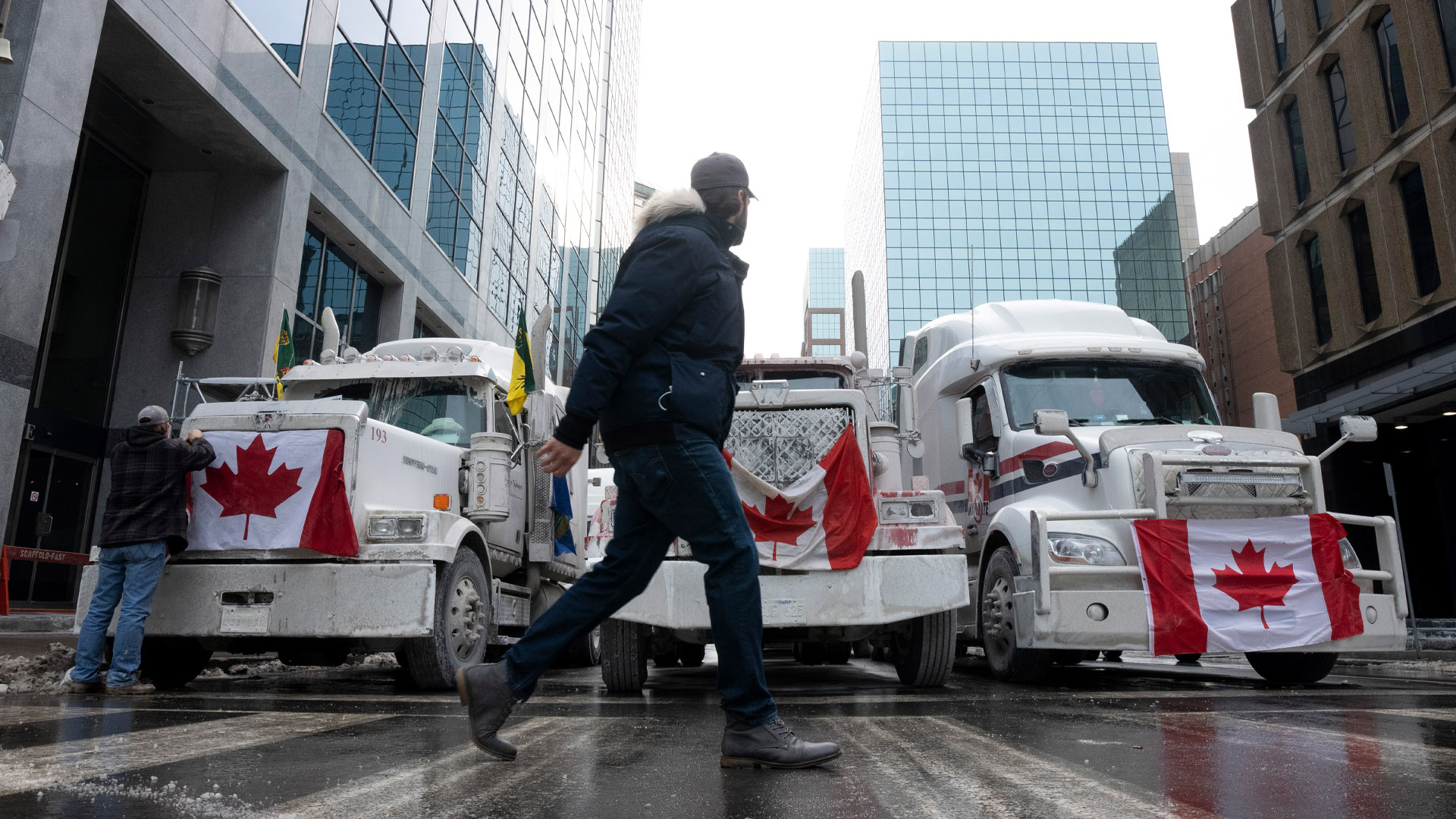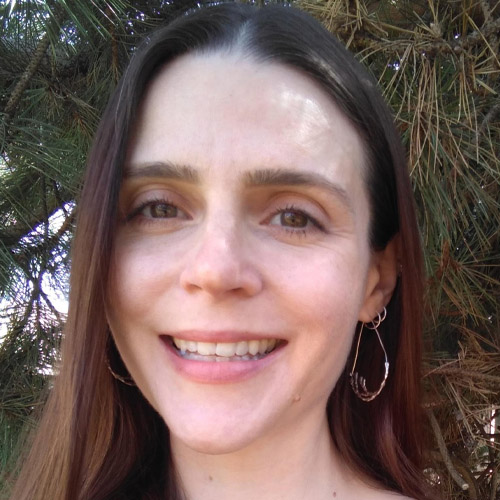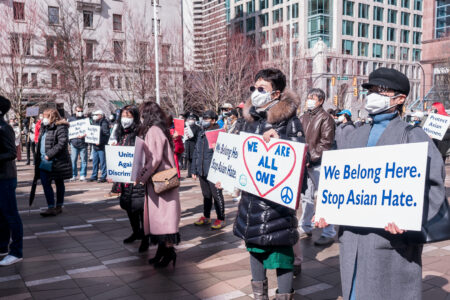
The so-called “Freedom Convoy” descended on Ottawa with a stated intent of remaining until the federal government revokes COVID-19 measures and mandates (most of which are the responsibility of the provinces). Convoy members set up near Parliament Hill and in the surrounding downtown area, beginning a loud and disruptive occupation that, as of now, has no end in sight.
The vast majority of Canadians disagree with the stated aims and methods of the convoy, and much of the conversation focuses on whether or not it has a right to be there. From a standpoint of recognizing freedom of association and expression as fundamental components of a free and healthy democratic society, this makes sense.
However, this framing misses the point. Lost in the division between people supporting their right to protest and those who argue the occupation ought not to have been allowed to set up in the first place are several harder questions, ones we need to answer if we are to understand what makes the so-called “Freedom Convoy” a danger to a truly free and democratic society.
What’s happening in Ottawa is not a question of whether society supports protest. Fundamentally, it’s a question of how seriously we take democratic equality.
The people who have set up in Ottawa are occupiers. Comparing them to other protesters fails to understand the deep-rooted inequality that underpins both the occupation and many of our institutional responses to it. Indeed, it is institutional failure after institutional failure that we ought to focus on; we need to hold these structures to account and turn our attention to the people our institutions fail.
It is noteworthy that the convoy began its journey to Ottawa on the International Holocaust Remembrance Day. And that the occupation began in earnest on the fifth anniversary of the Quebec City mosque attack, where an anti-Islam shooter murdered six men and left others seriously injured.
Convoys and protests: Anti-lockdown mobilization grows in Canada
The “Freedom Convoy” rolled in carrying swastikas, confederate flags, and other hate-filled paraphernalia, all of which were proudly displayed upon arrival. For those who had been paying attention to the white supremacist and far-right racist affiliations of convoy organizers and active opponents of COVID-19 measures, none of this was unexpected. Canada’s narrative is one of inclusion and belonging, but it is a framing at odds with the structural racism amplified by our responses to the pandemic.
When it comes to denunciations of the occupation, it is the lack of respect for notable Canadian monuments that seems to resonate most with a majority of (white) Canadians. It is here we see criticisms of the occupiers going too far, as the media reported on occupiers defacing the Terry Fox statue with an occupier slogan and urinating on the National War Memorial.
Let’s set aside for a moment the irony of anti-vaxxers trying to claim as a symbol Fox, a supporter of medical science if there ever was one. That the general unruliness of constant horn-honking and public urination and defecation draws the most outrage speaks volumes about the ease with which we accept unequal treatment within our society. There is a double standard in the way police are treating the occupiers, but it is a double-standard that is well-entrenched in our society.
Much of the well-deserved criticism against the occupation highlights the sharp contrast between the occupiers’ reception and the ways police forces all over Canada treat Black and Indigenous people, who are violently policed for existing in public space, let alone protesting. As we watch the Ottawa police throw up their hands and claim there is nothing they can do for fear of escalating the situation, we have countless examples of swift and violent responses to peaceful Black and Indigenous protests.
Convoy occupiers have targeted LGBTQ2S residents, threatened people for wearing masks, uttered death threats and made it unsafe for residents to leave their homes. Ottawa is experiencing school closures, cancelled vaccination clinics and threats to other essential services, providers and recipients of this care. This includes attacks against employees at Shepherds of Good Hope, which offers support to homeless and vulnerable adults, and Cornerstone Housing for Women, an emergency women’s shelter that saw residents hospitalized as a result of the ongoing occupation.
We see occupiers stockpiling gas and erecting makeshift structures outside Parliament as the Ottawa police do nothing, inaction with a price tag of $800,000 per day. In contrast, this summer we saw the Toronto police spend approximately $2 million to violently clear encampments of homeless occupants and arrest peaceful protestors.
The occupation underscores our institutional failure. However, this goes far beyond an inability — really a refusal — to eject from our capital an unruly and violent tantrum-throwing group of white supremacists with a complete lack of understanding of what it means to live in a society with other humans.
Our failure is to recognize that in many ways this occupation exists because, as with other tantrum-throwing groups, our society has fostered a deep sense of white entitlement, such that any restrictions on daily life — even the simplest act such as wearing a mask to save other people’s lives — is wrongly interpreted as oppression.
We have seen these institutional failures amplified by the Ottawa police in their inaction this past week, but they are ever-present in in the broader racist, colonial, and homophobic record of policing across the country. When we acknowledge that our institutions were not designed for everyone, it should be no surprise to see a major institution give a pass to vocal supporters of white supremacy.
We see these institutional failures in the responses from our elected officials, who are engaging in finger-pointing and narrow denunciations of the most widely objectionable parts of the Ottawa occupation rather than (yet again) failing to take structural racism and the protection of the most vulnerable in our community seriously.
After a notable silence on the occupation, Ontario Premier Doug Ford went on record to say he is “extremely disturbed” by the convoy’s desecration of monuments and displays of the swastika. A few days later, the province’s chief medical officer of health called for Ontario to reassess the value of vaccine mandates. The premier, who was originally against vaccine passports, has already said he has no plans to expand their reach to third doses. Together, the Ontario government ignores the medical and scientific consensus and lends credibility to the anti-vaccine, anti-science demands of a vocal and harmful minority hell-bent on getting their own way at the direct expense of everyone else.
This is what the state of our democracy looks like in Canada. The question is: now that more people are aware and outraged, will anything of substance change?











